Knoll announces Newson Task Chair by Marc Newson
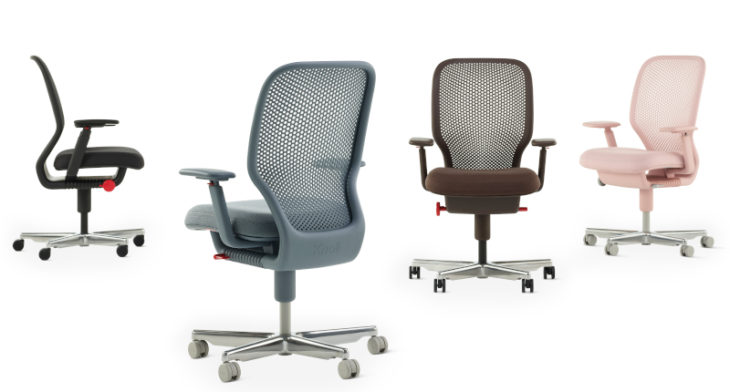
Knoll is excited to share news about its newest design from prolific industrial designer Marc Newson.
The Newson Task Chair is Marc’s first foray into ergonomic task seating and is the second product he has designed with Knoll. Newson designed the chair from all angles – ensuring every surface, component, and seam meets with his rigorous commitment to simplicity. An innovation in tilt mechanisms, the T1 Control utilizes a vertical spring system that allows you to tailor the tension and recline experience unique to you. The elastomeric Honeycomb Back has a hammock-like effect that provides comfort so effortlessly that you barely notice it’s there.
The Newson Task Chair will be available to purchase in late summer/early fall. The starting price is $1,950.

Newson Task Chair Idea & Concept
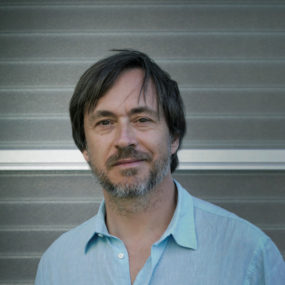
No other industrial designer working today has had a solo exhibition of specially commissioned pieces at the Gagosian Gallery, home base to many of the most influential artists of our time. Marc Newson has had two. Newson is exceptional in his ability to design things that people covet—whether the object is large or small; made in a limited edition or mass-produced; priced in the seven-figure range or available for a few hundred dollars.
At this stage in his illustrious career, Newson chooses his clients as much, if not more, as his clients choose him. He cuts a broad swath from aviation to footwear design and his roster of collaborators reads like a who’s who of über brands: Apple, Qantas, Nike, Louis Vuitton, Montblanc, Riva, and Alessi, to name just a few. Newson’s project with Knoll is his first foray into workplace design, though it’s not the first time he has designed furniture. That distinction goes—officially or otherwise—to his Lockheed Lounge, which rose to fame in a 1993 Madonna music video, the singer draped across its riveted aluminum surface.
His Newson Task Chair for Knoll is a decidedly different star vehicle, a showcase for the subtler art of subtraction—removing the unessential from sight. As Benjamin Pardo, Knoll’s former Executive Vice President and Design Director, observes of Newson’s deliberate move beyond the flamboyant chair-as- machine aesthetic that has dominated the furniture industry over the past few decades: “This chair is visually silent and a technological marvel.”
For Knoll, this chair is an opportunity to further explore an increasingly common reality of how people work today, where a chair is sometimes the sum total of someone’s “office.” According to Alana Stevens, Knoll Brand President, “The Newson [Task Chair] is about supporting a person at work—and these days that doesn’t just mean work at a desk. This chair is about supporting wherever—or however—a person works.”
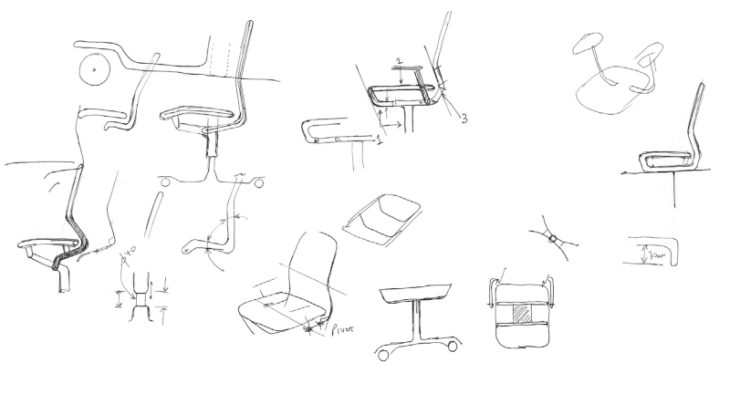
Meticulously crafted, effortless in design
For his part, Newson sees the task chair as the “holy grail” of the furniture business. “In the lifetime of any designer, you’ll struggle to find a project that’s more complex than this—on many levels,” he explains. But it’s that very quest that entices the Sydney-born, London-based designer. In fact, he approaches each new project as a black diamond run—a conceptual and technical challenge that requires skill, ingenuity, and a certain daredevil willingness to flout accepted norms.
As Newson sees it, a task chair is not just a comfortable place to sit for an extended period of time. Rather, it’s a physical expression of a matrix of ideas on subjects as varied as material production, ergonomics, beauty, and social norms. Despite the intense effort required to reconcile all of these issues into a single form, the final result must appear effortless. The performance features of Newson’s designs may be extensive and complex, but the shape that contains them is always straightforwardly simple. “His designs are single, sculptural—almost monolithic—objects,” Stevens notes.
Whether he is designing the Apple Watch or a chair, Newson never flaunts the object’s technical prowess. The form—its alluring shape, shiny surface or overall tactility—seduces so that the functionality can subsequently impress.
[The] simplicity of the chair’s single fluid line is an open invitation—it’s what attracts people to it.
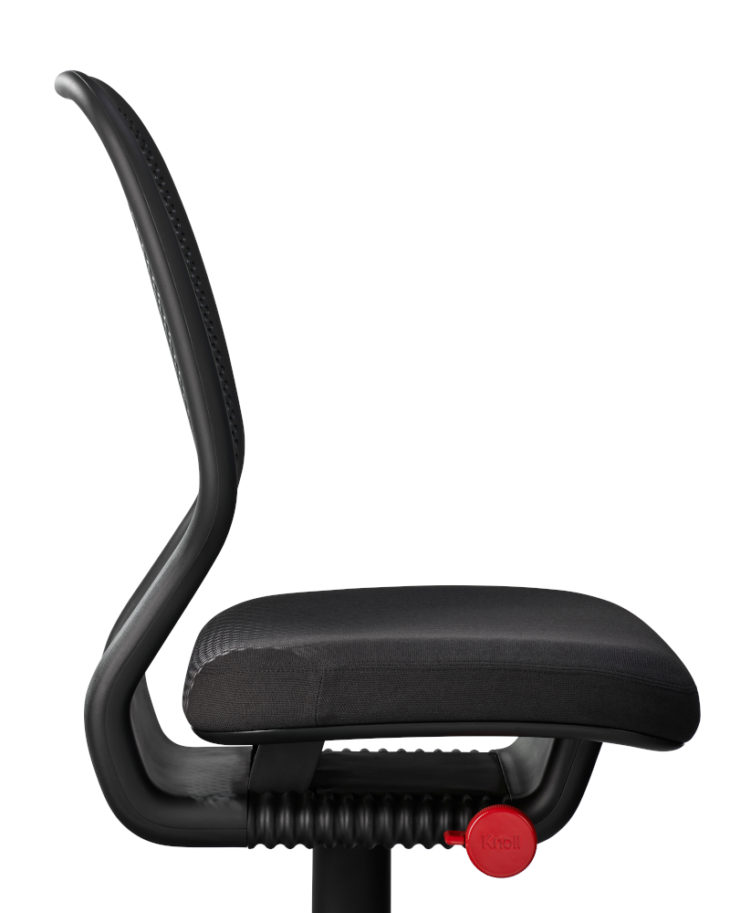
Support so personal you didn’t even notice it
That simplicity of the chair’s single fluid line is an open invitation— it’s what attracts people to it so that they can then experience the ingenuity embedded within as they sit down and effortlessly shift positions. The guiding vision of the chair is the single sweeping line of its profile—no visual distractions diminish the elegant cantilever of the seat.
As Christopher Flynn of Knoll’s product development team points out, this required a radical rethinking of the shape and position of the mechanism, which typically hangs below the seat. Here, the mechanism is vertical not horizontal and wraps around the central cylinder, freeing the seat’s supporting structure from any additional baggage. The seat support’s radiator-like accordion folds further accentuate the seat’s floating image. This mechanism is more compact than usual and in an unexpected location, yet it allows for three types of adjustments—the height of a seat via a small lever, the tension of the back rest via a bold round knob, and a tilt limiter—adjustments that by now are so intuitive to anyone who sits in a task chair that they are performed almost automatically.
The back of the chair is made of an elastomeric material molded over a rigid frame, giving it both the strength and flexibility to comfortably support users as they enjoy various positions within the 19 degrees of recline.
It takes ten different materials to fabricate the chair and the various materials are combined without obvious gradations of color from one material to the next or visible fasteners to disrupt the impression of a seamless whole. It is just such painstaking refinements, which, Flynn notes, fully occupied the Knoll product development team for months, if not years. “He pushed the engineers really hard,” agrees Stevens of Newson’s interaction with the Knoll team. “And that’s good.”
Newson’s designs exude a palpable joy that comes from revealing what a material can do…
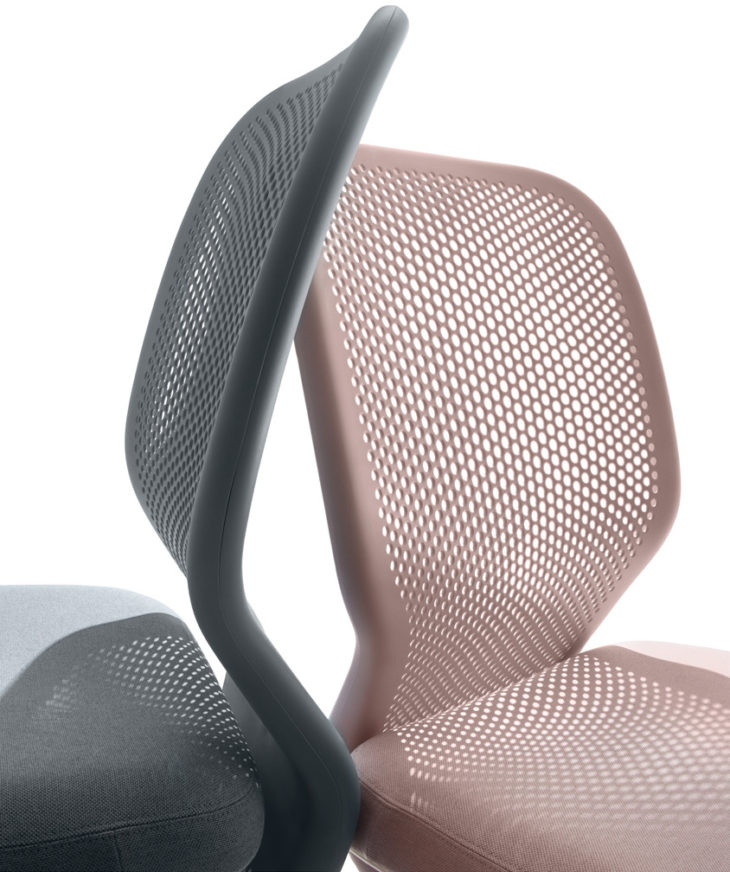
Every single detail considered
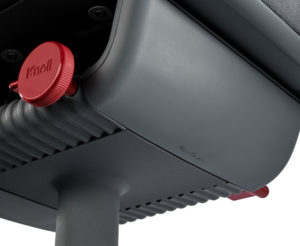 Newson has said that a lot of what drives him is dissatisfaction with the objects he sees around him and a belief that they could be better if the design had been given more thought. For him, “more thought” implies not just a careful consideration of exactly which material is needed to make a particular product, but also going further in order to understand how the material itself is sourced, produced, and how it performs over a period of extended use. It seems he has to deconstruct every step in the process of making a chair before he can fully commit to a design, to be sure he can push materials and fabrication processes beyond their standard applications.
Newson has said that a lot of what drives him is dissatisfaction with the objects he sees around him and a belief that they could be better if the design had been given more thought. For him, “more thought” implies not just a careful consideration of exactly which material is needed to make a particular product, but also going further in order to understand how the material itself is sourced, produced, and how it performs over a period of extended use. It seems he has to deconstruct every step in the process of making a chair before he can fully commit to a design, to be sure he can push materials and fabrication processes beyond their standard applications.
Unlikely as it may sound, it’s this unharnessing of materials and processes from their usual restrictions and typical applications that help to explain why Newson’s products are coveted by so many. Like the improbably bold cast-glass chairs and intricate Cloisonné Red Lounge at his most recent Gagosian exhibition, Newson’s designs exude a palpable joy that comes from revealing what a material can do if you truly understand its properties and push it to the edge of its capabilities. “Marc’s designs celebrate their very objectness—that’s his brand,” explains Pardo. Like The Newson Task Chair, they have the inherent confidence that comes from succeeding against all odds.





